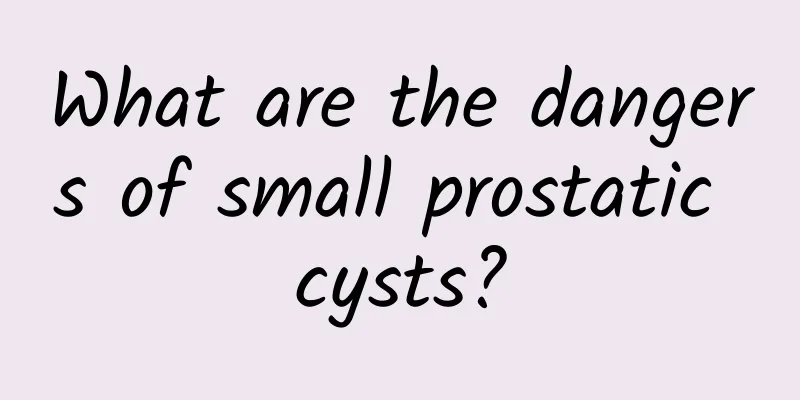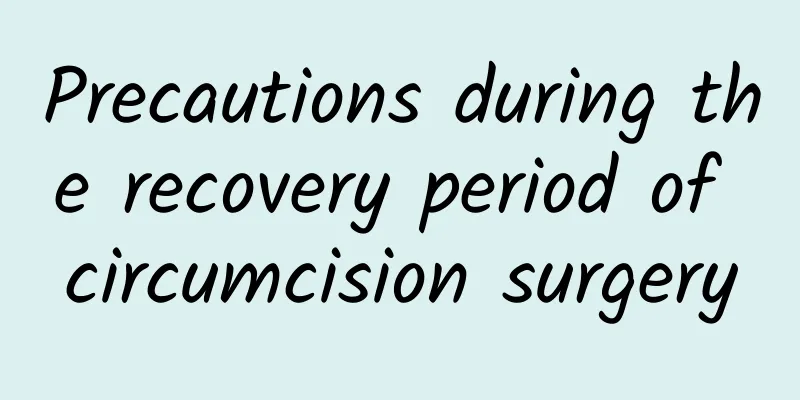What are the dangers of small prostatic cysts?

|
There are many diseases in the male prostate. In addition to the well-known prostatitis, prostatic cysts are a more harmful disease. Once suffering from this disease, patients must maintain personal hygiene, adjust their life and work, eat a light and balanced diet, and take various measures to avoid the serious development of the disease, because if it develops seriously, there will be the following hazards. 1. Urinary dysfunction: Prostatic cysts occur due to the blockage of the prostate ducts or glands and the accumulation of prostatic secretions. Therefore, the symptoms of patients are directly related to the size of the cyst. As the cyst fluid increases, the prostate will swell locally. In severe cases, the entire gland will swell, and the consequence of the swelling is that it will compress the nearby rectum and urethra, thus causing defecation and urination disorders. 2. Causes urinary stasis: Some patients may also experience uncomfortable symptoms such as urinary obstruction or defecation obstruction. Urinary obstruction often causes acute urinary retention. Urinary retention has a serious impact on the normal life and work of adults. Therefore, if male friends have such symptoms, they must pay attention to them. In daily diet, you must pay attention to eating more fresh fruits and vegetables. Increase urination, which can effectively eliminate toxins in the body. 3. Complications of orchitis: A small number of patients have thick secretions from the urethra, and an anal examination can feel the prostate with a pulsating sensation, but these phenomena usually occur in the late stage of the disease. The harm of prostatic cysts is that the abscess occasionally ruptures into the urethra, rectum, perineum or space around the bladder, causing connective tissue inflammation. However, some patients do not have fever clinically. The main harm of prostatic cysts is lower urinary tract obstruction, and epididymis and testicle inflammation are also possible. IV. Treatment Small cysts without symptoms do not need treatment, while larger cysts or small cysts with symptoms can be treated surgically, with various routes including transvesical, extravesical, transperineal, and transrectal. Incomplete surgical resection is often caused by poor exposure, with a high recurrence rate and many complications. Transperineal surgical resection of cysts close to the perineum is prone to cause ED, so it should be used with caution in young patients. There are reports of transperineal or transrectal cyst puncture and aspiration under B-ultrasound positioning, followed by injection of coagulant, but recurrence is easy. Cysts close to the urethral bladder or protruding into the bladder are surgically removed by transvesical surgery or transurethral electroresection to remove most of the top of the cyst to allow adequate drainage. Laparoscopic resection of prostatic cysts has the advantages of clear tissue exposure, short operation time, no damage to pelvic tissue, small trauma, no fistula, and little bleeding. It is the preferred method for treating prostatic cysts that protrude behind the urethra and the bladder neck. For cysts near the urethra or protruding into the bladder, transurethral electrosurgical resection of the cyst is the best surgical approach, but for young patients, preserving the seminal colliculus is crucial for normal ejaculation. When the patient continues to have a high fever, urinary tract symptoms do not improve significantly, urethral overflow, and constipation, the possibility of prostatic cysts should be considered, and after confirmation with the help of B-ultrasound and other examinations, abscess incision and drainage or puncture drainage treatment should be performed. The above symptoms will only be relieved when the abscess is completely eliminated. Puncture treatment is relatively simple. Through the anus, a long needle is inserted into the pus cavity, and a syringe is used to aspirate until the pus is completely sucked out. Sometimes it will not be completely eliminated in one time, and it takes two or more times to achieve a satisfactory effect. When the abscess is large and contains a lot of pus, abscess incision and drainage is the best method. Use an anorectoscope to expose the prostate area, use a sharp knife to cut the rectal wall into the abscess, drain the pus and place a drainage tube. Depending on the drainage situation and combined with examination, the time to remove the drainage tube is determined. Currently, this treatment still requires the use of antibiotics in conjunction with treatment. Physical therapy is helpful for acute prostatitis and abscesses. Proper application can promote the absorption of inflammation. |
<<: What are the common symptoms of male urinary system diseases?
>>: What are the causes of pain in the glans urethra when urinating?
Recommend
What is the cause of right testicular pain?
Testicular pain is a type of male disease. Testic...
Do you know why men have enlarged breasts?
Enlarged breasts in men are abnormal. This indica...
What color is dead sperm?
Under normal circumstances, semen should be milky...
Is it okay for a man to not have sex?
Male sex life is very important for men, because ...
How to check the cause of premature ejaculation?
Whether the sexual intercourse between husband an...
What to do if gout is caused by high uric acid in men
If all the physiological indicators of the body a...
How often do sixty-year-old men have sex?
After entering puberty, humans are exposed to muc...
What are the symptoms of kidney deficiency in men? These three are the most common
Bronchial asthmaindent: 2em; text-align: left;&quo...
Can Red Bull improve male potency? Is it true that Red Bull plus eggs can improve male potency?
Red Bull is a favorite of many men. After drinkin...
How to treat impotence?
Impotence is the word that scares men the most. T...
What medicine should men take for urinary tract infection
Male urinary tract infections are generally divid...
What should I do if I suspect I have premature ejaculation?
Premature ejaculation is a very common male disea...
I sweat a lot during exercise in summer and my face feels hot. What should I do?
Everyone should know that we will sweat more or l...
Sperm gelatin
After sperm is discharged from the body, it will ...
Penis swelling and inflammation
The male penis is a very sensitive part. If this ...









